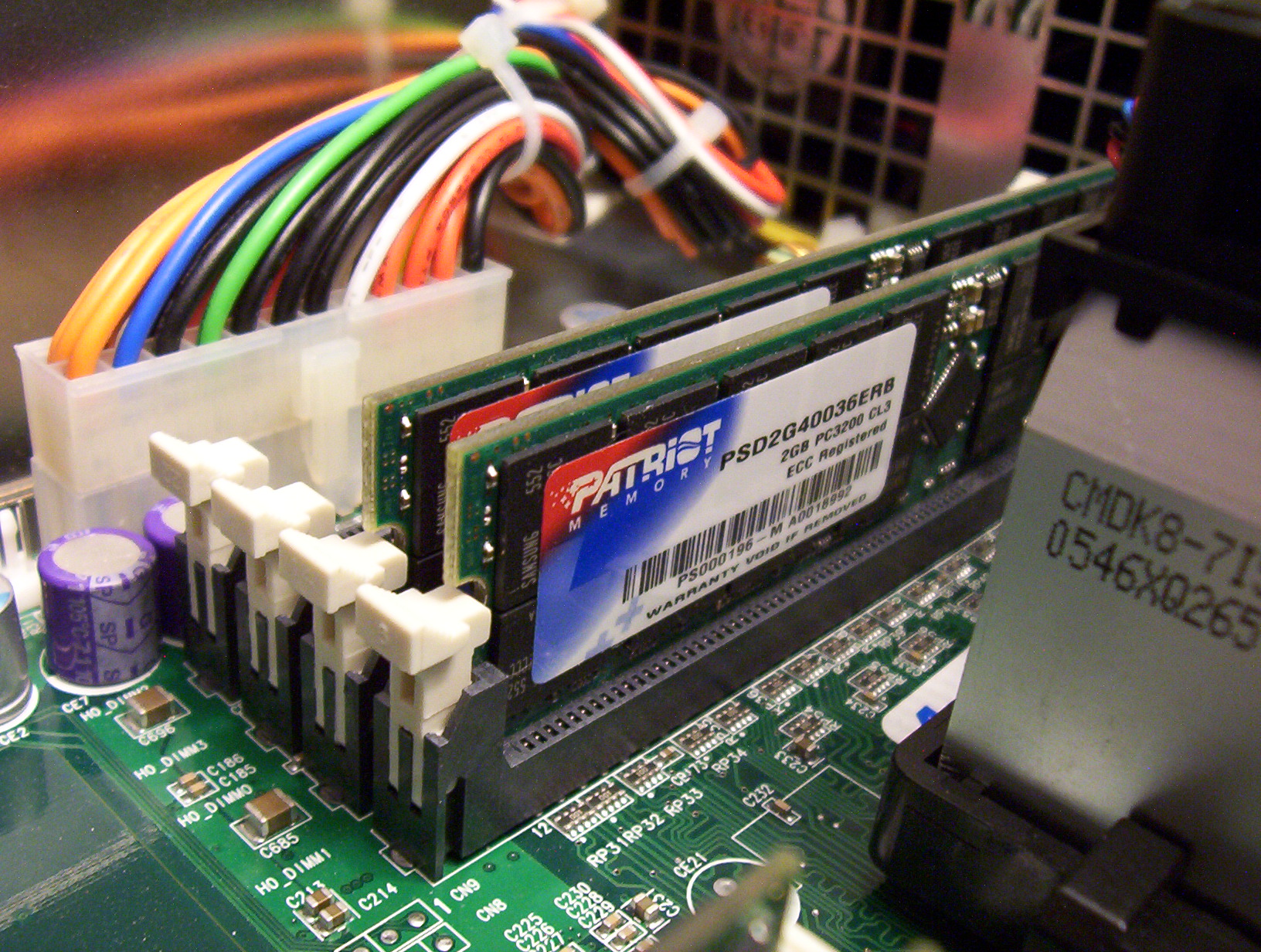How computer RAM works
Let's try to figure out how RAM works. Random access memory is the most well-known type of memory installed in a PC. It is called random access memory (randomaccess), since it allows you to get information from any of its cells. To gain access, you need a row and a column; the required cell is located at their intersection.

There is dynamic and static memory. Dynamic works on the principle of a "leaky bucket". Static memory is fast, but expensive.
The memory cell resembles a leaky bucket. But sequential access memory (SAM) allows sequential access to cells. Something like a tape recorder. When searching for data, a sequential check of each cell is carried out. This memory can be used to create buffers, such as a texture buffer for a video card. This memory makes sense when arranging data in the order in which it will be used.
A memory chip is an integrated circuit (IC) that contains numerous transistors and capacitors. Random access memory DRAM has a paired transistor and capacitor, which make up the cell, which contains 1 bit of data. The capacitor has 1 data bit: 0 or 1. The transistor is a switch, with the help of which the chip circuit reads or changes the state of the capacitor.
A capacitor is a kind of leaky "bucket", which is filled with electrons at the right time. During filling, it is in state 1, and during emptying it is in state 0. The problem with a capacitor is that within milliseconds the capacitor is emptied (data leakage occurs). Therefore, the processor or memory controller needs to charge the capacitors all the time, making them stay full. For this, the memory controller first reads and then writes the data back to the capacitor.
DRAM has a capacitor that can resemble a leaking bucket. If it does not fill up with electrons over and over again, it will get a zero state. It is just such an update that gave the name to this type of memory - "dynamic". The disadvantage of such memory is precisely the need for constant updating, which takes time and from which the memory works slower.
How the cell of dynamic RAM (DRAM) is arranged
The structure of such memory resembles a three-dimensional grid or a sheet of a squared notebook. Each cell contains 1 bit of information. First of all, a column is looked for, and after that, information is written to certain lines through signal transmission along the column.
On such a sheet, some of the cells are colored red, and some remain unstained. The red cells are in the "1" state, and the white ones are in the "0" state.
The notebook sheet is replaced by a silicon wafer. Columns and rows are "printed" into it. There is a memory cell at the intersection of a column and a row.
Dynamic memory transfers charge on a specific column - these are column addresses (CAS). To specify the cell address, you need to set control signals. When writing, the capacitor takes charge, and when reading, the sense amplifier must determine the charge of the capacitor. If the state of charge is greater than 50%, the bit should be read as "1"; otherwise, it is "0".
In addition to the cells, microcircuits are needed that allow you to write data into them and read them.
How static memory works
has random access, but there is a different technology in it. Each bit of the data stored in it is held by the trigger circuit. There are 4-6 transistors and thin wires in the cell flip-flop. This memory does not require a charge renewal. Therefore, it functions faster than the dynamic one. But due to the numerous components, its cells are larger than heap. In general, static memory has a smaller capacity chip.






